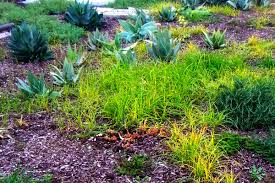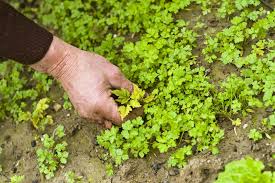Crop yield losses ranging from 37 to 93 per cent have been recorded due to weed infestation in unweeded dry land crops in some part of the world. Therefore, attempt at understanding nature of weeds and its characteristics is a necessary condition if we are to reduce the harmful effects of weeds on crops and crop production.
This unit attempts to describe weeds, characterize, and categories them. Questions as to why weeds are able to persist, survive in competition with crop plant, their competitive ability, how weeds are able to develop an efficient mechanism of dispersing their seeds are tackled. The desirable and undesirable effects of weeds are also treated in this article.
Definitions of Weeds
A weed is a plant growing where man does not want it. Almost any kind of plant can therefore be a weed, as long as it exists in a location or situation where it is considered undesirable.
It also follows that a kind of plant may be a weed in one situation and not a weed in another situation. Because the concept of a weed came from humans the definition of a weed has varied, depending on the effect that weeds are perceived to have on food production, recreative activities and aesthetic values of humans.
Generally, it is the undesirability or unwanted aspects of those plants which also have nuisance values that make them weeds.
Classification of Weeds
Weeds are classified in several ways that include life cycle, habitat, and growth habit, degree of undesirability or noxiousness, morphology and by taxonomy or scientific classification.
1. Based on Life cycle
a. Annual weeds
These are those weeds that complete their life cycle (from seed germination to seed production) in one year. Such weeds die off during the dry season after completing their life cycle.
Examples of annual weeds are Ageratum conyzoides, Amaranthus spinosus, Brachiaria deflexa, etc. Some of the characteristics of annual weeds include an ability to produce large quantity of seeds, tendency to occur in high density, efficient methods of seeds dispersal, and seed dormancy that prevent all seeds produced by the weed in one year from germinating at once.
b. Biennial weeds
These weeds require two seasons to complete their growth. They grow from seeds and devote the first season to food storage, usually in short fleshy roots.
During the next spring they draw on the stored food to produce a vigorous vegetative growth and to mature seeds. Among biennials weeds are wild carrots, wild parsnip, burdock, etc.
c. Perennial weeds
These weeds live for more than two years. The majority of simple perennials possess root crown that produce new plants year after year.
Plants of this type depend upon production of seeds for their spread or by means of underground part. Quack grass, Johnson grass, and Kirikiri grass are spread by underground stems.
2. Other classifications include:

2a. Common weeds
Common weeds are annuals, biennials, or simple perennials that are readily controlled by ordinary good farming practices.
2b. Noxious weeds
These are those weeds which are difficult to control because of an extensive perennials root system or because of other characteristics that make them persistent.
Characteristics of weeds
Characteristics of weeds which enable them compete effectively with crop plants and therefore to survive over the generations in association with crop production are as follows:
Weeds have the ability to flower and produce seeds in short period of time. With this characteristic it means weeds are able to complete its life cycle even if the favourable season for growth is relatively short.
High reproductive capacity: many annual weeds have ability to produce large quantities of seeds for example Strigaasiatica produce 90000 seeds per plant, Strigahermonthica 42000, Digitariahorizontalis 12000, Amaranthus spinosus 235000, etc.
Seeds of many weeds species exhibit varying forms of dormancy. Seed dormancy characteristics are survival mechanism in weeds.
They ensure that weed seeds, particularly of annual weeds, do not all germinate during the first period in which environmental conditions are favourable.
Rather, certain percentages of viable seeds remain dormant and are able to germinate at later dates, often in several succeeding seasons.
Weed seeds possess specialized dormancy mechanism such as impervious seed coats the presence of growth inhibitors and requirements for exposure to certain temperature or light treatments.
The net effect of these dormancy mechanisms is that seed germination occurs only under conditions that will enable the plant to complete its life cycle.
Weed seeds are able to survive in the dormant state in the soil for several years, only to germinate and grow when they are brought to the surface or when environmental conditions are appropriate.
Weed seeds possess an efficient mechanism for dispersal. The main agents of weed dispersal are wind, animals and water. Most weed seeds are adapted to be dispersed by one or more of these agents.

Presence of allelochemicals that inhibit the growth of crops or other weeds, such as in Siam weed (Chromolenaodorata)
Weeds have a very wide adaptation therefore, has the ability to grow and produce seeds under a wide range of environment.
Weeds possess the ability to grow very rapidly, branched or tiller profusely, and cover extensive areas example of such weed is Andropogon spp.
Read Also : Proper Sowing and Planting Practices Guide
The presence of perennating organs such as rhizomes, corms, tubers, and bulbs. These organs not only enable the weed to survive from season to season but they also enable the weed plant to re-grow each time it is cut off at soil level by the farmer.
Many weed species are able to propagate themselves from pieces of stems and roots. Thus when the plant is cut into pieces during weeding or tillage operations, each piece is able to give rise to a new plant.
For example, the ability of morning glory plant to propagate itself in this way makes it a difficult weed to control.
Weeds are persistent and resistant to control measures. Weeds that are able to develop such resistance are additionally favoured by the fact that the chemical usually eliminates other weeds that would normally have competed with the resistant weed.
Losses Caused By Weeds

Weeds may cause losses in several ways either direct or indirect losses:
1. Direct losses caused by weeds
a. Decrease in crop yield
Weeds decrease yield by competing with the crop for water, nutrients and light.
Crops yield are most depressed when either water, nutrient is in short supply making the competition for these factors very severe.
The competition for light depends on the canopy structure of the crop and the weed and upon their relative times of establishment.
A tall- growing weed in a prostrate crop, such as goat weed in melon, is likely to compete more severely for light than a prostrate weed in tall crop, such as portulaca in maize.
b. Impairment of crop quality
The presence of weed seeds in small grains lower the quality of the grain.
The cost of separating seeds of weeds from crop seeds is one of the added (indirect) costs of growing the crop.
Green weed pieces in threshed grain raise the moisture content so that the grain may not keep in storage.
Weed debris sticking to harvested cotton lint tend to reduce its quality
Presence of weeds can also lower the quality of forages or make them unpalatable or even poisonous to livestock for example, weeds such as wild garlic, mustard, fan weed, etc. consumed in hay or pastures impart undesirable flavors to dairy products.
Seeds of many weeds (e.g. Achyranthes aspera, Boerhaviadiffusa, B. erecta) will also reduce the quality of animal wool.
Spiny weeds such as wild yam and those which produce certain kinds of pollen may also pose considerable health hazards to humans working on the farm.
c. Harboring of plant pest and diseases
Many weeds act as host to organisms that carry plant diseases example, the wheat rust disease, in which the barberry weed plant is a necessary alternate host and Curly top, a serious virus disease of the sugar beet, is carried from such weeds as the common mallow, chickweed, and lambs quarters to the sugar beet by the beet leafhopper, which breeds upon these weeds. Weeds of the family Solanaceae contribute to the spread of such pests as the Colorado potato beetle.
d. Weeds interfere with harvest operation
Picking maize by hand is hampered if the field is infested with Rottboelliacochinchinensis.
Heavy weed infestation interferes with speedy drying of crops and generally slows down harvest operations, thus increasing cost of harvesting. Additional time may be required to clean crop seeds of weeds.
The presence of weeds can impede water flow in irrigation canals as well as damage to farm machinery through clogging by weeds, these presence of weeds can also increase the cost of irrigation through direct costs in keeping the canals weed-free.
The cost of weed control adds considerably to the cost of crop production; the farmer has to spend an appreciable percentage of his annual budget on various weed control measures.
2. Indirect losses caused by weeds
Weeds cause many other types of losses in agriculture that cannot be directly related to weeds. These losses are indirect in nature and include the following:
Weeds serve as alternative host for many plant diseases and pest that attack crops.
The presence of weeds imposes a limit on farm size. Farmers generally cultivate only the area that they know from experience they will be able to keep weed-free.
The presence of weeds can reduce the economic value of lakes by preventing or limiting fishing activities.
Weeds such as Imperata cylindrical, Andropogan spp., Pennisetum spp. and Hyparrhenia spp. become fire hazards in the dry season. Fires expose the soil to erosion hazards, destroy wildlife and help to impoverish the soil.
Read Also : The Ultimate Step-by-Step Guide to Vegetable Gardening

